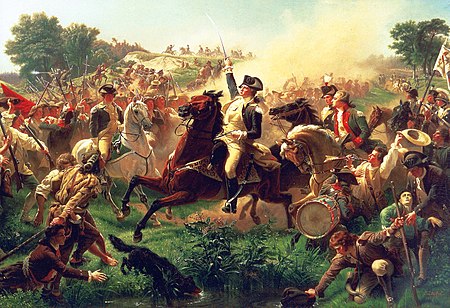Universal Coded Character Set
| |||||||||||||||
Read other articles:

Period in ancient Egyptian history (c. 664 BCE–332 BCE) Late Period of ancient Egyptc. 664 BC–c. 332 BCEgypt in the 6th century BC.CapitalSais, Mendes, SebennytosCommon languagesAncient EgyptianReligion Ancient Egyptian religionGovernmentMonarchyPharaoh • c. 664–610 BC Psamtik I (first)• 336–332 BC Darius III (last) History • Began c. 664 BC• Ended c. 332 BC Preceded by Succeeded by Third Intermediate Period of Egypt Mace…

Italian priest Very ReverendClaudio AcquavivaS.J.Born14 September 1543Died31 January 1615(1615-01-31) (aged 71)OccupationJesuit priestKnown forbeing the second founder of the Jesuit Order and Superior General of the Society of Jesus Claudio Acquaviva, SJ (14 September 1543 – 31 January 1615) was an Italian Jesuit priest. Elected in 1581 as the fifth Superior General of the Society of Jesus, he has been referred to as the second founder of the Jesuit order.[1] Early life and f…

Cycling race 2011 Paris–Nice2011 UCI World Tour, race 2 of 27Race detailsDates6–13 March 2011Stages8Distance1,307 km (812.1 mi)Winning time34h 03' 37Results Winner Tony Martin (Germany) (HTC–Highroad) Second Andreas Klöden (Germany) (Team RadioShack) Third Bradley Wiggins (Great Britain) (Team Sky) Points Heinrich Haussler (Australia) (Garmin–Cervélo) Mountains Rémi Pauriol (France) (FDJ) Youth Rein Taa…

Radio station in Naples, FloridaWSGLNaples, FloridaBroadcast areaSouthwest FloridaFrequency104.7 MHzBrandingMix 104.7ProgrammingFormatHot adult contemporaryOwnershipOwnerRenda Broadcasting(Renda Broadcasting Corporation of Nevada)Sister stationsWGUFWJGOWWGRHistoryFirst air dateMay 10, 1980; 43 years ago (1980-05-10)Former frequencies97.7 MHz (1980–1982)103.1 MHz (1982–1999)Call sign meaningSeagull (former mascot)Technical information[1]Licensing authorityFCCFacility…

Kino MacGregorBorn (1977-09-12) September 12, 1977 (age 46)Miami, Florida, U.S.EducationNew York University (MS, PhD)Occupation(s)Yoga teacher, author, entrepreneurYears active2011–presentSpouse Tim Feldmann (m. 2008)Websitekinoyoga.com Kino MacGregor (born September 12, 1977) is a notable American Ashtanga Yoga teacher, author,[1][2] entrepreneur,[3][4][5] influencer, inspirational speaker, and video producer. …

Federico LuigiPrincipe di Hohenzollern-HechingenStemma In carica14 novembre 1735 –4 giugno 1750 PredecessoreFederico Guglielmo SuccessoreGiuseppe Federico Guglielmo NascitaStrasburgo, 1º settembre 1688 MorteHechingen, 4 giugno 1750 (61 anni) DinastiaHohenzollern-Hechingen PadreFederico Guglielmo di Hohenzollern-Hechingen MadreMaria Leopoldina Ludovica di Sinzendorf Religionecattolicesimo Federico Luigi di Hohenzollern-Hechingen (Strasburgo, 1º settembre 1688 – Hechingen, 4 …

Jakov IgnjatovićPortrait of Ignjatović karya Novak RadonićLahir(1822-12-08)8 Desember 1822Szentendre, HungariaMeninggal5 Juli 1889(1889-07-05) (umur 66)Novi Sad, Austria-HungariaPekerjaanPenyair Jakov Ignjatović (bahasa Serbia: Јаков Игњатовић, 8 Desember 1822 – 5 Juli 1899) adalah seorang novelis dan penulis prosa, yang utamanya menulis dalam bahasa Serbia beberapa juga terdapat bahasa Hungaria. Dia juga anggota aktif Matica Srpska. Biografi Jakov Ignj…

Diacritical mark, the dot element of the letters i and j For the surname, see Tittle (surname). Not to be confused with title or tilde. Lowercase i and j in Liberation Serif, with tittles in red. A tittle or superscript dot[1] is a small distinguishing mark, such as a diacritic in the form of a dot on a letter (for example, lowercase i or j). The tittle is an integral part of the glyph of i and j, but diacritic dots can appear over other letters in various languages. In most languages, t…

List of events ← 1777 1776 1775 1778 in the United States → 1779 1780 1781 Decades: 1770s 1780s 1790s See also: History of the United States (1776–1789) Timeline of the American Revolution List of years in the United States 1778 in the United States1778 in U.S. states States Connecticut Delaware Georgia Maryland Massachusetts New Hampshire New Jersey New York North Carolina Pennsylvania Rhode Island South Carolina Virginia List of years in the United States by state or territoryvte…

German psychologist and philosopher (1872–1956) Ludwig KlagesBorn(1872-12-10)10 December 1872Hannover, Prussia, German EmpireDied29 July 1956(1956-07-29) (aged 83)Kilchberg, Zurich, SwitzerlandNationalityGermanAlma mater Leipzig University Technische Hochschule Hannover University of Munich AwardsGoethe Medal for Art and Science (1932)Era20th-century philosophyRegionWestern philosophySchool Continental philosophy Anti-foundationalism Anti-militarism Biocentrism Lebensphilosophie[…
NFL team season 2014 Denver Broncos seasonOwnerThe Pat Bowlen TrustPresidentJoe EllisGeneral managerJohn ElwayHead coachJohn FoxHome fieldSports Authority Field at Mile HighResultsRecord12–4Division place1st AFC WestPlayoff finishLost Divisional Playoffs(vs. Colts) 13–24Pro Bowlers 11 QB Peyton ManningRB C. J. AndersonWR Demaryius ThomasWR Emmanuel SandersTE Julius ThomasT Ryan CladyDE DeMarcus WareOLB Von MillerCB Aqib TalibCB Chris Harris Jr.S T. J. Ward AP All-Pros 3 WR Demaryius Tho…

American chain of cafes This article needs additional citations for verification. Please help improve this article by adding citations to reliable sources. Unsourced material may be challenged and removed.Find sources: Corner Bakery Cafe – news · newspapers · books · scholar · JSTOR (November 2014) (Learn how and when to remove this message) CBC Restaurant CorporationCorner Bakery Cafe, Washington, D.C.Trade nameCorner Bakery CafeCompany typePrivateIndust…

Blog written by Steven Molaro The SneezeType of siteNewsOwnerSteven MolaroURLhttp://thesneeze.com/Current statusInactive (last updated April 7, 2011) The Sneeze is a blog written by Steven Molaro,[1][2] identified on the site only as Steve of Los Angeles, California.[3] In 2005 the site was listed among the top 101 websites by PC Magazine,[4] and won a Blogger's Choice Award.[2] The site gained attention for its Steve, Don't Eat It! section, a series …

This article needs additional citations for verification. Please help improve this article by adding citations to reliable sources. Unsourced material may be challenged and removed.Find sources: List of University of Minnesota people – news · newspapers · books · scholar · JSTOR (October 2012) (Learn how and when to remove this message) This is a list of notable people associated with the University of Minnesota. Alumni Nobel laureates Norman Borlaug Erne…

American politician (1941–1996) For the NOAA ship, see NOAAS Ronald H. Brown (R 104). For other people named Ron Brown, see Ron Brown (disambiguation). Ron Brown30th United States Secretary of CommerceIn officeJanuary 22, 1993 – April 3, 1996PresidentBill ClintonPreceded byBarbara FranklinSucceeded byMickey KantorChair of the Democratic National CommitteeIn officeFebruary 11, 1989 – January 21, 1993Preceded byPaul G. KirkSucceeded byDavid Wilhelm Personal detailsBornRonal…

Undifferentiated vegetative tissue of certain organisms This article is about the undifferentiated tissue. For other uses, see Thallus (disambiguation). Thalli redirects here. For the Indian village, see Thally. Thallus of Pellia epiphylla Thallus (pl.: thalli), from Latinized Greek θαλλός (thallos), meaning a green shoot or twig, is the vegetative tissue of some organisms in diverse groups such as algae, fungi, some liverworts, lichens, and the Myxogastria. A thallus usually names the ent…

Term used to categorize types or levels of sanitation for monitoring purposes Share of population using safely managed sanitation facilities in 2020[1] Improved sanitation (related to but distinct from a safely managed sanitation service) is a term used to categorize types of sanitation for monitoring purposes. It refers to the management of human feces at the household level. The term was coined by the Joint Monitoring Program (JMP) for Water Supply and Sanitation of UNICEF and WHO in 2…

Quiver Tolor A Tolor, pre-1887.TypeQuiverPlace of originBorneo (Brunei, Indonesia, Malaysia)Service historyUsed byDayak people Tolor or Telenga is a traditional quiver in which the Dayak hunters carry the poisonous darts for Sumpit (blow-pipe), originating from Borneo.[1] Description The Tolor is made of a piece of bamboo. Among its myriad uses, bamboo makes an excellent cylindrical container. This bamboo quiver was made to carry the slender darts for a Dayak hunter's blow…

Combat involving electronics and directed energy For warfare on the Internet, see Cyberwarfare. For the Underground Resistance album, see Electronic Warfare (album). United States Space Force personnel operating a satellite antenna during an electromagnetic warfare military exercise Part of a series onWarOutline History Prehistoric Ancient Post-classical castles Early modern pike and shot napoleonic Late modern industrial fourth-gen Military Organization Command and control Defense ministry Army…

For the ancient city at the mouth of the Nile, see Pelusium. Wall painting from Herculaneum depicting an idealized ceremony of Isis: the priest at top center holds a jar thought to contain Nile water,[1] while some of the attendants carry water jugs[2] In the Roman Empire, the Pelusia was a religious festival held March 20[3] in honor of Isis and her child Harpocrates. It would have coincided with the second day of the Quinquatria, a five-day festival to Minerva.[4 …